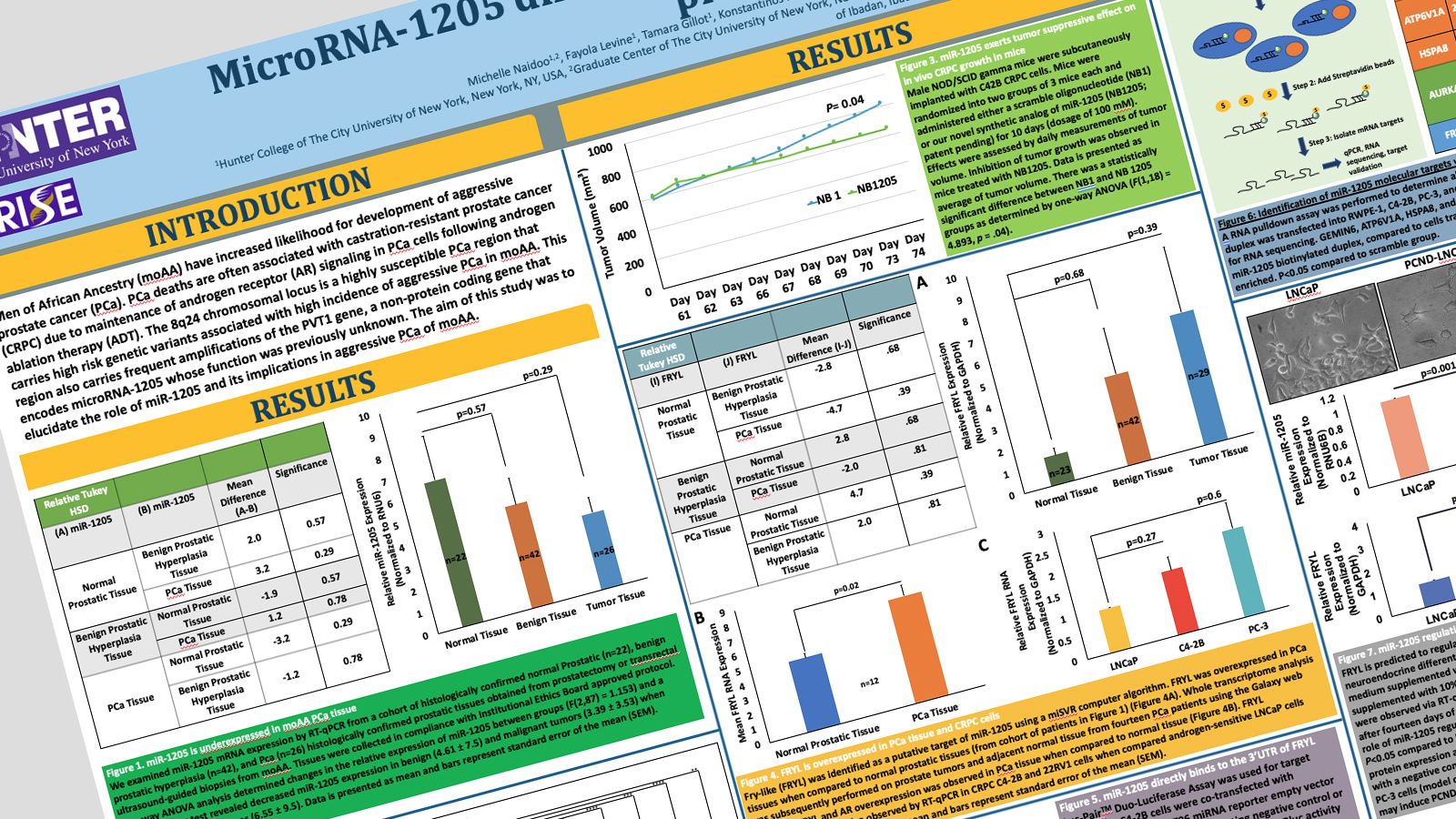
MicroRNA-1205 Directly Binds to FRYL and Suppresses Aggressive Prostate Cancer
| Name | Michelle K. Naidoo |
| Institution | Hunter College |
| Research Field | Basic Cancer Research |
| Role at Institution | Graduate Student |
| Presenter(s) | Michelle K. Naidoo |
MicroRNA-1205 Directly Binds to FRYL and Suppresses Aggressive Prostate Cancer
Michelle Naidoo1,2, Fayola Levine1, Xavier Graña-Amat3 and Olorunseun Ogunwobi1,2
1Hunter College of The City University of New York, New York, NY, USA,
2Graduate Center of The City University of New York, New York, NY, USA,
3Lewiz Katz School of Medicine, Temple University, Philadelphia, PA, USA
High mortality rates of prostate cancer (PCa) are associated with metastatic castration- resistant prostate cancer (mCRPC) due to the maintenance of androgen receptor (AR) signaling despite androgen deprivation therapies (ADTs). Resistance to second generation ADTs leads to the progression to AR-independent neuroendocrine PCa (NEPC), which is observed in nearly 1 in 5 men with mCRPC and is associated with very poor outcome. PCa neuroendocrine differentiation (PCND) is observed in treatment-related NEPC, however, this mechanism is poorly understood. The 8q24 chromosomal locus is an important prostate cancer (PCa) susceptibility region containing genetic variants associated with increased PCa incidence and aggressiveness. PVT1 is a gene located within this region that encodes microRNA-1205 (miR-1205), whose function is largely unknown. We have previously reported that miR-1205 is underexpressed in a cohort of histologically confirmed PCa tissue, when compared to normal tissue and is also underexpressed in vitro in CRPC cells, when compared to non-CRPC cells. We also demonstrated that exogenous miR-1205 significantly inhibited tumor volume in CRPC-derived xenograft male NOD/SCID gamma mice, suggesting that miR-1205 is a tumor suppressor. To understand the molecular mechanism of miR-1205, we demonstrated that miR-1205 directly targets Fry-like (FRYL) by performing an RNA pulldown assay. FRYL is predicted to regulate dendritic branching leading to the hypothesis that FRYL plays a role in PCND. To examine miR-1205 regulation of FRYL in PCND in vitro, LNCaP cells were cultured under androgen deprivation conditions for fourteen days. We observed FRYL mRNA overexpresssion and a significant reduction of miR-1205 expression in LNCaP-PCND cells when compared to undifferentiated LNCaP cells. To further determine whether this mechanism drives PCND, miR-1205 was inhibited in RWPE-1 and LNCaP androgen-sensitive cells. As a result, FRYL protein expression was increased along with neuroendocrine marker expression when compared to cells transfected with a negative control. To determine whether PCND is driven directly through FRYL activity, FRYL was silenced using an siRNA in PC-3 cells (model of NEPC). Interestingly, knockdown of FRYL did not reveal a decrease of neuroendocrine markers, suggesting that miR-1205 may induce PCND independently of FRYL. Further understanding this molecular mechanism may provide novel insights into overcoming ADT resistance in aggressive PCa.
Email questions and comments about this abstract to michelle.naidoo86@myhunter.cuny.edu.
